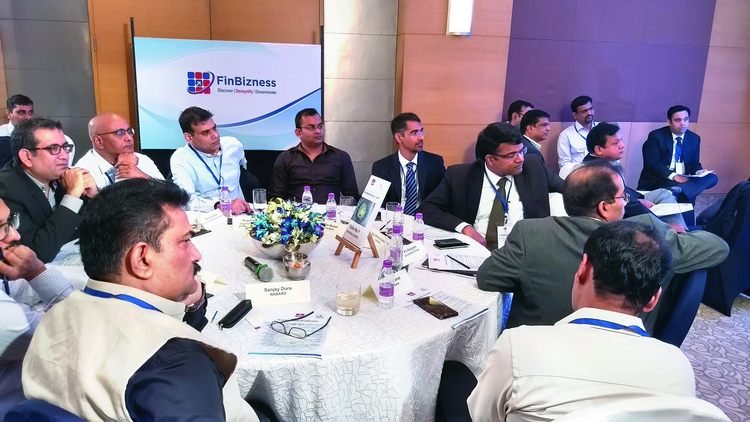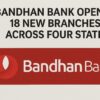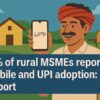Banking Frontiers organized a roundtable of bankers and insurers related to the agri sector to discuss the emergence and adoption of weather related technologies
Participants:
Manoj Rawat, Head & Group Executive Vice President, Agri business & Rural Banking, RBL Bank
Dr Ajay Verma, Head, Rural & Non-traditional Business, Future Generali Insurance
Amandeep Singh, Head, Marketing & CFO, Agora Finance
Gopi Krishna Swarangi, Group EVP & Product Head, Agri Business & Rural Banking, YES Bank
Rajbir Chadha, Head, Agri & Rural Business, HDFC ERGO
P C Panigrahi, GM, Financial Inclusion & Agri Business, Union Bank of India
Sayan Basak, Head, Retail & Agri Loans, DCB Bank
Radhamadhav, Head, Agri Finance, National Collateral Management Services
Abhishek Bhardwaj, Head, Internal Control & Operational Rrisk – Agri Banking, IDFC Bank
Md Islamul Haque, DGM, Priority Sector Lending, IDBI Bank
N.V. Shiv Kumar, Head, Agri Business & Consumer Banking, IndusInd Bank
Sanjay Kumar Dora, DGM, Farm Sector Policy Department, NABARD
Vaman Kamat, SVP & Head, Retail Agri Business & Loans, HDFC Bank
Namdeo Patil, DVP, Agri Loans & Tractor Loans, HDFC Bank
Prashant Kumar, Head, Agri & Priority Sector Lending, Standard Chartered Bank
Dipti Golia, Head, Agri Business, ICICI Bank
Neha Agarwal, Vice President, ICICI Lombard General Insurance
Pavan Chiluka, AVP, Financial Inclusion, Standard Chartered Bank
Suraj Sharma, CEO, Punarvasu
Himanshu Goyal, India Sales Alliances Leader, The Weather Company, an IBM Business
Awadesh Kumar, Founder, Quenext
Sumantra Mukherjee, VP, Product Management, RML Agtech
Himanshu Goyal: There is a big excitement in IBM after the acquisition of The Weather Company about 18 months ago. It will be integrated in a year’s time. This is the world’s second largest IoT platform known to mankind. We generate around 26 terabytes of data every day from various sources to give a 15-minute update on every half a square kilometer of plot on the earth’s crust. This system caters to 26 billion API calls in every 24 hours.
There were 900 employees in this company. A few of them are the world’s best-known meteorologists or mathematicians with PhD degrees from the Ivy League institutes. These meteorologists can take data from anywhere, use numerical and physical models and give you an advisory on weather. That makes us very confident about our accuracy or frequent update better than anyone in the industry. We are most accurate on temperature compared to our competitors.
Awadesh Kumar: The biggest problem in the agriculture sector is information asymmetry. We don’t know much about the plot. If it is not good for the farmer, it is not good for the financial sector. We can take care of that financial asymmetry in some way. We can rate each and every plot in terms of risk and the crop that can grow on it. We can give you a balance sheet of an agricultural asset every 15 days.

Sumantra Mukherjee: In the last 18 months, we have improved our products and have started delivering solutions to our farmers much beyond information. The products that we have introduced are essentially technology solutions, picking up multiple layers of data for every single farm and providing personalized intervention points and then giving solutions for those intervention points to the farmers in their own languages. What we do is we hand hold the farmer from the stage where he is selecting the crop to grow, provide climatic zones, demand supply chains that have been observed for that particular commodity and list the most suitable crops that he can grow. The weather details are fed into the system and the system tells us what time and what level of intervention is required from fertilizers to pesticides, when can a pest attack happen and then finally helping farmers in getting maximum return by helping them identify the best possible market. We have mapped over 1000 markets in the country and get commodity price data from them every single day on almost 86 commodity varieties, which farmers can access and then decide where do they want to go and sell.
Moderator: Do banks have traditional wisdom or technology for weather forecasts?
P.C. Panigrahi: No technology for decision making has been taken; only field data and traditional method is used, especially in pre-lending and post-lending stage. Type of crops will be based on the type of geography and the impact of climate. Decisions regarding shifting of crop are taken at the grassroots level and no weather data is taken.
How granular and stringent are the bank’s lending strategies?
The strategy is based on the district level credit planning policy. It is also based on the Potential Link Plan (PLP) devised by NABARD, and at the district level, DLCC decides the district credit plan and it is reviewed at quarterly intervals by the lead bank. Vulnerability of the area, including natural calamities, is also taken as data and used to prepare the strategy of the credit plan.
What weather guidance technology can help growth in agri-lending?
Technology such as weather satellites and Doppler radar are helpful. Doppler radar is additionally able to indicate the wind direction and wind speed. The big data is sourced from satellites and weather stations that provide broad scale factors to forecast weather changes.
Manoj Rawat: Couple of banks have started using on pilot basis forecasting techniques specially for the crops which are long term in nature and which are of premium quality, where you can afford to have this kind of forecasting. Banks have started building analytics but not at the farmer level. Broad portfolio level strategies are being built.
How can weather data improve farm output?
Manoj Rawat: All we talk about weather is rainfall. IMB will give it on taluka basis. What we want is weather insurance. What happened when the humidity changes? What happens if the quality of soil changes because of the excessive use of fertilizers? There are 23 weather related parameters which the insurance companies have to take into account. Consider cumin, which is high value crop. At the harvest, if suddenly the humidity increases the entire crop is lost. Therefore, we have to go beyond rainfall. We have to go for weather based indices.
Which other businesses have weather related risks?
Manoj Rawat: Indian economy is agrarian economy. A single bad monsoon the entire economy derails. 60% of India’s population is dependent on agriculture, but in reality, every sector gets impacted by monsoon. If a single monsoon can derail the economy, then we are still an agrarian economy.
What lessons have insurers learnt after losing $2 billion in natural calamities?
Dr Ajay Verma: Agriculture insurance has definitely started taking the note of the weather data, weather information, weather forecasting and realtime weather data whatever is available in the country.
Himanshu Goyal: If we can predict whether for at least 3 months in advance by machine learning and some factual data, that will benefit many industries.
Where do you source your weather forecasts from?
Dr Ajay Varma: In fact, as of now, predominantly most of the insurances are dependent on the data given by IMD in India. To some extent there are also private data providers. The only thing is how granular are these data. Insurance companies would like to look at maximum possible weather information and covering the major weather risk parallels as far as possible.
Are weather reports a potent tool to drive your business development?
Dr Ajay Varma: Yes, weather reports are available in the public domain. We take a cognizance of all those reports because we are risk carriers and are very much sensitive to all. We have to reinsure all those risks. And reinsurers are watching very closely on all those weather forecasts weather reports so we cannot afford to avoid all those reports which are available and we would definitely welcome the more regular information available whatever is available to finalize our strategy.
Which other businesses have risks connected to weather?
Panigrahi: Sectors affected are primarily agriculture, forestry, marine and allied activity. Among industries, mostly affected are automobile sector because 75% of the people live in rural India and they have a major impact on automobile purchases. Next is textile industry as it is related to cotton. Telecom, FMCG, banks, insurance, MFIs NBFCs, cement, construction, commodity market – these are the sectors which are severely affected.
How capable are we in forecasting droughts catastrophe using historical data?
Sanjay Kumar Dora: Climate change has emerged as a risk multiplier, especially in the agriculture sector. We are seeing catastrophe, which, based on traditional analysis or modeling, is likely to happen once in 100 years. But we are witnessing drought of that severity or intensity in 2-3 consecutive years. So how capable are we to forecast the catastrophe, based on this type of climate change?
Himanshu Goyal: There was a discussion somewhere that all our coastal cities face the danger of going under water. We have data for India for the last 5 years, and for worldwide and US we have data for around 25 years. There are methods by which you can at least predict 6-7 months in advance. But, beyond weather, there are local issues like wrong trees planted on wrong soil. In Chennai, all the devastation happened to the trees which were not supposed to be on that soil. We are creating a huge amount of clutter by putting concrete on these cities. If you fly down into Delhi, you don’t see trees from Noida to the point you touch down; you just see some trees in Houz Khas area. It is a man-made issue that desperately needs solutions.







